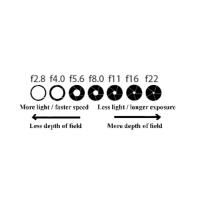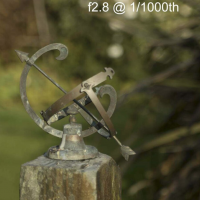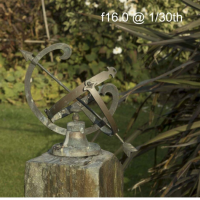“When the going gets tough….”
In the absence of a regular weekly report of our meetings and in the current unusual circumstances, the IOM Photographic Society is taking the opportunity to provide some insight into the art of photography and some techniques and guidelines you may find interesting and helpful.
If you only ever use the “automatic” setting on your camera, then depth of field will perhaps prove challenging as understanding and taking advantage of this concept and using it creatively requires switching off the camera’s auto function and using the manual camera controls of aperture, ISO and speed settings.
Put simply, depth of field is the distance between the closest and furthest objects in your image which appear sharp – anything closer or further away becoming less and less sharp and ultimately becoming totally defocussed. In a landscape shot, for example, you would probably want the image to be sharp from foreground to background, whereas for a fast-moving action shot, it would usually be essential that the subject is in focus but perhaps unnecessary for the background. Getting those two images with a “correct” exposure and focus requires an understanding of both the aperture and the speed settings (ignoring for the moment the ISO setting).
The aperture is the “hole” in the lens through which light passes to the sensor or film plane – it can be varied from wide open (a setting usually around f2.8 or f4.0) to a very small aperture (usually f16.0 or f22.0). The settings are in a sequence – F2.8 f4.0 f5.6 f8.0 f11 f16 f22 – known a “stops”. From f2.8 onwards, each stop reduces the amount of light entering the camera by half (so f4.0 is half the light of f2.8).
To compensate and to ensure the equivalent amount of light enters the camera for the exposure, the speed settings must then be doubled for each reduction in stops – f2.8 at 1/500th is the same amount of light as f.4.0 at 1/250th, for example. The tricky bit of the physics of a lens is that the depth of field changes with the aperture – so a wide open lens at f2.8 has a very shallow depth of field whereas a setting of f16.0 or f22 gives a very wide depth of field. The two small images with this article show the changing DoF with two different aperture settings. All of which means that a landscape shot (a non-moving subject) is probably best shot on a tripod with a small aperture such as f11or f16 whereas the action shot is best done with a wide open lens at f2.8 when the speed setting is at its fastest and the action is captured.
And one last comment – the closer you are to your subject, the narrower the depth of field..….
Given the current travel restrictions, why not try a few shots in the garden – maybe a family member sitting in a chair, using different apertures as an experiment – you’ll soon get the hang of this difficult concept!
However you take your images, if the result is pleasing and you like it, then good enough – your shots will provide a record of the day or the event and always be there to remind you of it.
Chris Blyth



